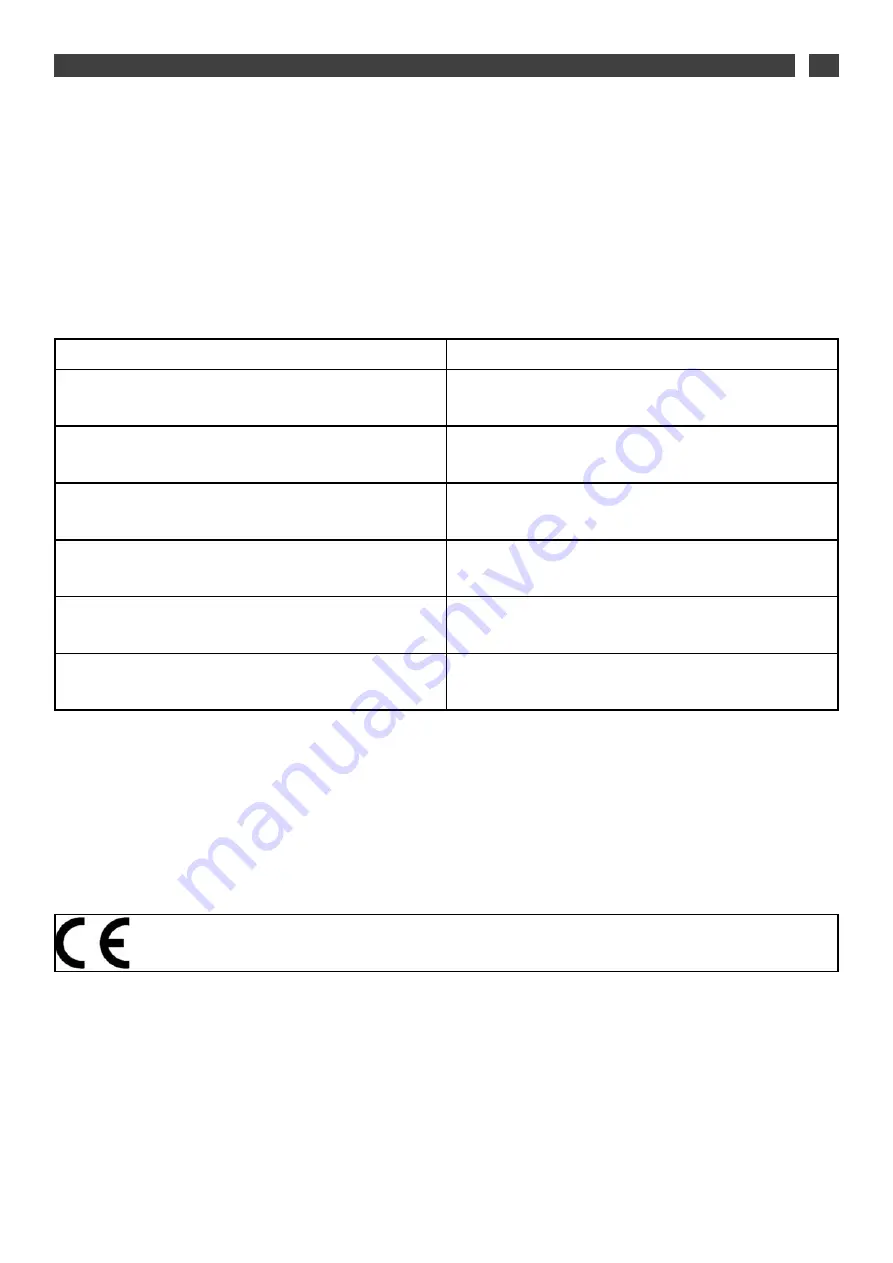
O
OP
PE
ER
RA
AT
TIIN
NG
G P
PR
RO
OB
BL
LE
EM
MS
S
There are some noises that it is quite normal for a refrigerator to make:
•
The refrigerant gas can produce a gurgling sound as it travels through the circuits.
•
The compressor may produce a buzzing noise, which can be more noticeable during start-up.
•
The “cracking” noise produced by expansion and contraction of the materials used.
T
TE
EC
CH
HN
NIIC
CA
AL
L A
AS
SS
SIIS
ST
TA
AN
NC
CE
E D
DE
EP
PA
AR
RT
TM
ME
EN
NT
T
If you have already performed the indicated checks and your problem still persists, DO NOT ATTEMPT TO MAKE ANY REPAIRS YOUR-
SELF. Contact your nearest Technical Assistance Department.
P
PR
RO
OB
BL
LE
EM
M
S
SO
OL
LU
UT
TIIO
ON
N
The appliance does not work.
Check that the plug is correctly connected, that the fuse hasn’t
blown or that the circuit-breaker has not jumped.
The refrigerator vibrates or is noisy.
Check that it is level. Adjust the feet.
The refrigerator gets too cold or not cold enough.
Check the position of the thermostat and set it to a more suitable
temperature.
The refrigerator’s bulb does not light.
Check the bulb and replace it if necessary. If the problem persists,
check that your appliance is connected.
The compressor does not start after a change in the temperature.
This is normal; the compressor will restart after a certain time.
There is water on the floor or on the shelves.
The hole for draining away the defrosting water must be blocked.
Unblock it with a knitting needle.
EN
4
4 /
/ PARTICULAR MESSAGES, INCIDENTS
0
09
9
T
TH
HIIS
S A
AP
PP
PL
LIIA
AN
NC
CE
E C
CO
OM
MP
PL
LIIE
ES
S W
WIIT
TH
H E
EE
EC
C D
DIIR
RE
EC
CT
TIIV
VE
ES
S
2006/95, 2004/108,
9
96
6//5
57
7,, 9
92
2//3
31
1,, 9
94
4//6
62
2



































